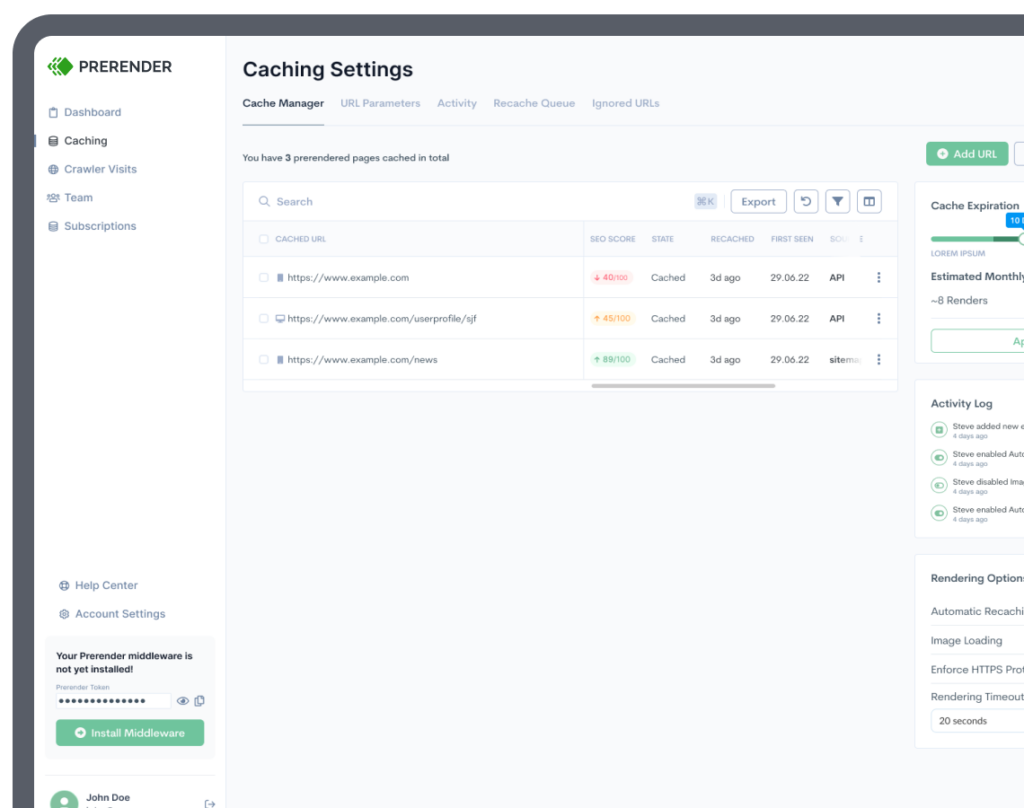One vital element often overlooked when optimizing ecommerce SEO is the role of robots.txt files. When set up right, robots.txt files can significantly impact your product page visibility and rankings on SERPs.
We’ve previously covered the basics of how to use robots.txt files and their common mistakes, but applying robots.txt to ecommerce sites requires a more specialized approach fitting to the SEO needs of retail sites.
Before we dive into robots.txt SEO best practices for ecommerce websites and the how-tos, let’s briefly recap what robots.txt is and why it’s particularly crucial for ecommerce online stores.
Why Optimizing Robots.txt is Vital for Ecommerce SEO
Robots.txt is a text file in your website’s root directory. It instructs search engine crawlers (typically using the Disallow directive) about which pages to crawl and index and which pages they shouldn’t visit and process. For ecommerce sites, managing robots.txt takes on additional significance due to its unique challenge.
Most retail websites have hundreds of thousands of product pages but an incomparable, limited crawl budget. This means search engines have fewer resources to discover and index all your pages. Strategically using a robots.txt file is, therefore, essential to optimizing crawl budget spending and your content’s SEO results.
For instance, you can set the robots.txt files to allow Googlebot to index your bottom-line pages, such as product pages, but disallow them to access content that does not need to show up on SERPs, such as login portals. This way, you ensure that Google can always present the latest information on the search results, promptly reflecting the updates on your product availability, prices, SEO, and more.
The’ Disallow Directive’ section later in the blog provides more detailed information about which pages should and shouldn’t be indexed.
6 Best Practices to Get the Most Out of Your Ecommerce Robots.txt Files
Now that we’ve covered the role of robots.txt files on ecommerce SEO, let’s dive into the best practices for implementing and managing your retail site’s robots.txt file.
1. Don’t use ‘Blanket Disallow’ Rules
The beauty of robots.txt lies in its ability to target specific sections or pages you want to exclude from indexing. Instead of a ‘blanket disallow,’ consider a more focused approach and target pages with no SEO value, such as /cart, /account, and /checkout. These pages don’t offer valuable content for search engines and can be safely excluded.
If you have a specific directory containing user-generated content or internal search results, you can use a Disallow directive to block that entire directory. However, remember to be specific and avoid accidentally blocking valuable content within that directory.
2. Manage Faceted Navigation Carefully
Faceted navigation allows users to filter ecommerce products by various attributes, which is great for user experience. However, it can create an overwhelming number of URLs that drain the crawl budget quickly and dilute link equity. Follow the instructions below to control the crawling of your pages:
| Disallow: /*?color= Disallow: /*?size= Disallow: /*?price= Allow: /*?category= |
This approach blocks most filter combinations while allowing category-level pages to be crawled. You can also be more specific to ensure these parameters are blocked only when they are not the last parameter.
| Disallow: /*?color=*& Disallow: /*?size=*& |
3. Protect Customer Privacy and Sensitive Data
To further boost security for your ecommerce site, you must disallow access to sections containing personal information like checkout pages, basket/cart pages, and the entire “My Account” area (if applicable). Search engines don’t need to crawl these pages, and by denying them access, you free up the crawl budget for more valuable content.
4. Optimize for Mobile-First Indexing
Google prioritizes the website’s mobile version for indexing and ranking. If your robots.txt file unintentionally blocks resources specific to your mobile version, it can significantly impact your ecommerce SEO performance. By including the following Allow directives in your robots.txt file, you can ensure search engines can access and crawl mobile-specific resources on your website:
| Allow: /*mobile$ Allow: /*responsive$ |
Related: Follow these 7 tips for creating mobile-friendly JavaScript pages.
5. Handle Seasonal and Temporary Pages
Seasonal sales pages, limited-time promotions, and other temporary content can be valuable for driving traffic and conversions. However, once the promotion ends or the season passes, the content on these pages becomes outdated and irrelevant and should no longer be prioritized. You can use robots.txt to manage this issue effectively, such as the following:
| Allow: /sale/ Disallow: /sale/expired/ |
You can also use this strategy to handle out-of-stock products, keep them indexed for future availability, or block them so that the crawl budget can focus on available items.
| Allow: /products/in-stock/ Disallow: /products/out-of-stock/ |
6. Regularly Audit and Update Your Robots.txt Files
Ecommerce sites are dynamic, with frequent changes in product offerings, categories, and site structure. Therefore, it’s best to review and update your robots.txt file regularly, ideally monthly. This ensures that your directives remain aligned with your current site structure and SEO goals.
What Are the Elements of an Ecommerce Robots.txt File?
For optimal performance, an ecommerce robots.txt file should contain instructions for search engine crawlers, specifying which pages and directories to access and which to avoid. Additionally, other elements contribute to the proper functioning of the robots.txt file directives, such as the following.
User-Agent Directives
The user-agent directive forms the foundation of your robots.txt file. It acts like a label, specifying which search engine crawler the following instructions are meant for, allowing you to create targeted rules for different crawlers.
It’s important to remember that specificity matters with user-agent directives. Using User-agent: * applies the rules to all crawlers. This is a simple approach, but for more granular control, you need to specify individual crawlers. For instance, User-agent: Googlebot would only apply the following instructions to Google’s search engine crawler. See the example below.
| User-agent: Googlebot [specific rules for Google] User-agent: Bingbot [specific rules for Bing] |
Pro tip: Robots.txt follows a “first match” rule, meaning the first user-agent directive that matches a specific crawler’s user-agent string will be applied. This allows you to create more specific rules for individual crawlers later in the file, overriding any generic rules placed earlier.
Disallow Directives
Disallow directives instruct search engine crawlers to avoid indexing specific pages or directories on your ecommerce website. As a result, they help optimize your crawl budget and ensure crawlers prioritize valuable content like product pages and informative blog posts.
Here’s a breakdown of what you typically want to disallow for ecommerce sites:
- Dynamic pages with no SEO value
These pages are crucial for the customer buying journey but offer little benefit to search engine optimization. Common examples include:
- `/cart`: This directory contains user-specific cart information and doesn’t need to be indexed.
- `/account`: This directory houses user accounts and login details, which should be kept secure and not indexed.
- `/checkout`: The checkout process involves dynamic elements and doesn’t provide valuable content for search engines.
- Filtered product views
Ecommerce websites often allow users to filter products by various criteria (price, color, etc.). These filtered views dynamically generate URLs and can lead to duplicate content issues. You can use a pattern like `/collections*/filter*`. This disallows any URL within the “collections” directory containing “filter” in the path, preventing crawlers from indexing these potentially duplicate views.
Remember, these are just common examples. The specific pages you disallow will depend on your website structure and functionality, so always double-check your directives to ensure they target the intended pages and avoid accidentally blocking valuable content.
Allow Directives
The Allow directive can be used to override a previous Disallow rule for specific URLs within a blocked directory. However, this should be done cautiously as it can lead to unexpected issues. For most ecommerce sites, a comprehensive set of Disallow directives is sufficient. Only use Allow directives when absolutely necessary.
Sitemap Declaration
The sitemap declaration may not be mandatory for robots.txt file applications for ecommerce websites, but it’s a strongly recommended practice. While robots.txt focuses on what not to crawl, the sitemap provides valuable information about your content. This includes details like “Last Modified” timestamps and potentially “Change Frequency” and “Priority” indicators.
These signals help search engines understand the importance and freshness of your content, allowing them to prioritize the crawling and indexing of your most valuable pages. Also, having the sitemap location readily available within robots.txt will save search engines time and resources (crawl budget).
Leverage Robots.txt Files to Improve Your Ecommerce SEO Results
A well-implemented robots.txt file is a powerful tool in your ecommerce SEO arsenal. By understanding its role and implementing best practices, you can ensure search engines efficiently crawl and index your website, allowing your valuable product pages and content to reach the right audience.
While utilizing robots.txt files is great, it doesn’t fix the JavaScript SEO problems from the root. Consider adopting Prerender, a prerendering SEO tool for ecommerce. The dynamic rendering solution of Prerender turns your JavaScript content into ready-to-index files, enabling them to be indexed 260% faster without missing any content and vital SEO elements.
Get the most out of your JavaScript SEO for ecommerce websites with Prerender. Sign up now and get 1,000 FREE renders!



